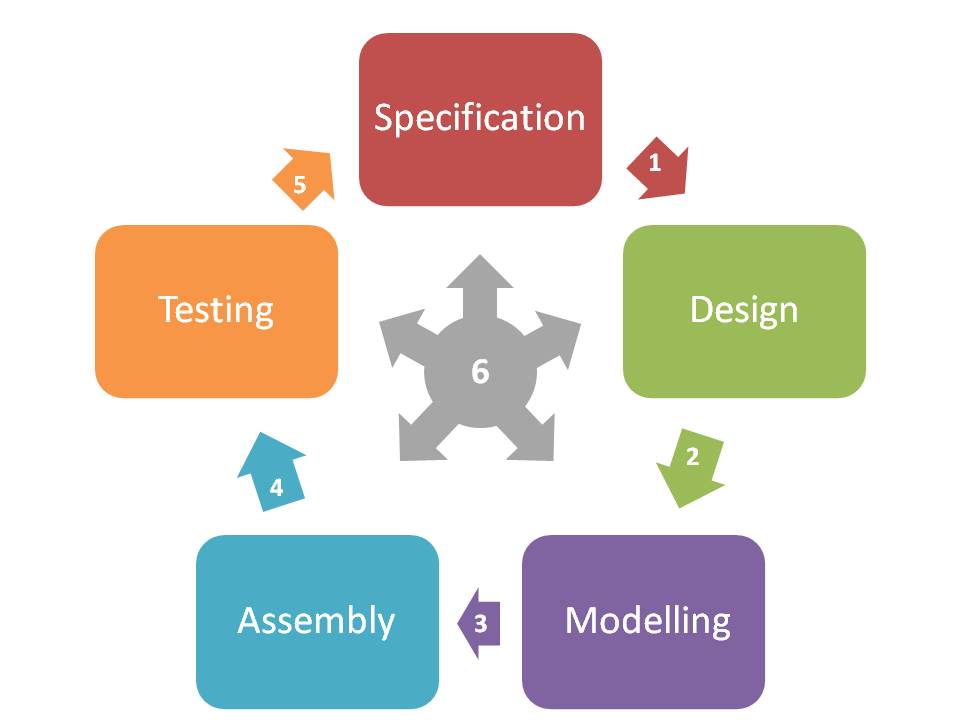|
Engineering approach to the project

|
| Diagram representing the engineering cycle.
|
1. Influence of Specification on Design and vice versa:
- It was one of the longest steps as we were struggling to compromise the specifications with the viable designs.
2. Influence of Design on Modelling and vice versa:
- All modelling done was meant to give answers to questions that arose in the design phase.
- Once designs were chosen, they were modelled. It was found that 2 step amplification is not likely to be effiecient, so it was decided that only 1step amplification will be taken forward to assembly. This was a significant conclusion as it would take weeks in the labroatory to find that out.
- The doubt about big enough gradient of AIPs to be established in the extracellular space to set off receptor was rationalised by modelling. The model allowed to determine conditions for the system to work
3. Influence of Modelling on Assembly and vice versa:
- The results from modelling allowed to progress with assembly
4. Influence of Assembly on Testing and vice versa:
- testing has been planned ahead, so assembly contructs have been modified to allow some testing methods like: purification or negative control.
5. Influence of Testing on Specifications and vice versa:
- We did not get there yet. However, if the specifications would not be met by the results, we would need to try redesigning the system or, in case of no alternative, changing the specifications.
6. Influence of components not adjacent to each other in the cycle:
- Testing may influence modelling as the results of the two do not match.
- Many experiments were diesgned specifically on the request of modellers in order to find parameters for the models. Obtaining those paramters would increase the reliability of the models.
|
 "
"




